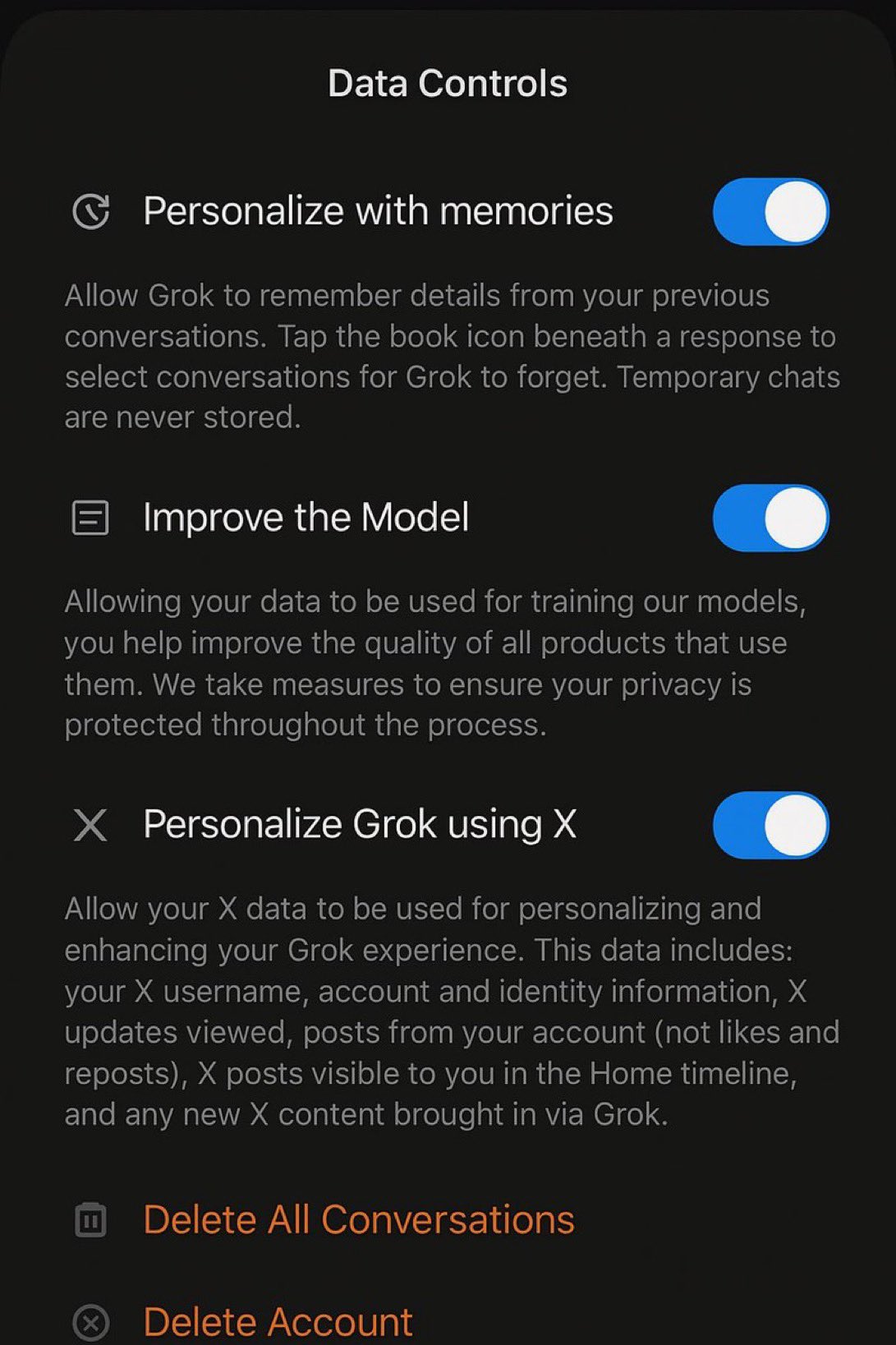With so many companies building in the frontier AI space, it’s hard to maintain an advantage for long.
Two days after ChatGPT had launched a personalized memory feature which would remember users’ chats and customize responses accordingly, Grok has launched a similar feature. The feature is available to Premium+ users on X, with broader access expected soon.

In the new memory feature, users get toggles to “Personalize with memories” and “Personalize Grok using X”. Allowing Grok to personalize with memories allows Grok to remember details from previous conversations. Grok has an option to let users to get it to “forget” certain conversations. Like ChatGPT, Grok allows for temporary chats which are never stored.
Grok also allows users to let them personalize it using X data. This data will include their X username, account and identity information, updates viewed and user posts, but not their likes and reposts. Active X users do post quite a lot on the platform, so it’s likely that this could be a rich source of data for Grok to use.

It does make sense for companies to look to personalize their AI models. Having personalized responses could create a bond with users by making the LLM appear more human-like. It can also help companies create a moat — at the moment, there are many competing LLMs, and users can effortlessly and seamlessly switch from one to the other. On the other hand, if a particular LLMs remembers previous chats, and can tailor responses based on them, it can lead to product stickiness, and prevent users from going over to other models. And perhaps most crucially, understanding the user might be the first step towards these AI companies introducing some form of advertising in its products. Companies like Google and Meta have built up user profiles over the years, which enable them to let advertisers target users to sell their products and services. It appears that AI companies could benefit greatly from creating such user profiles, and with OpenAI and xAI introducing the memory feature, it might not be long before other serious labs introduce it themselves.